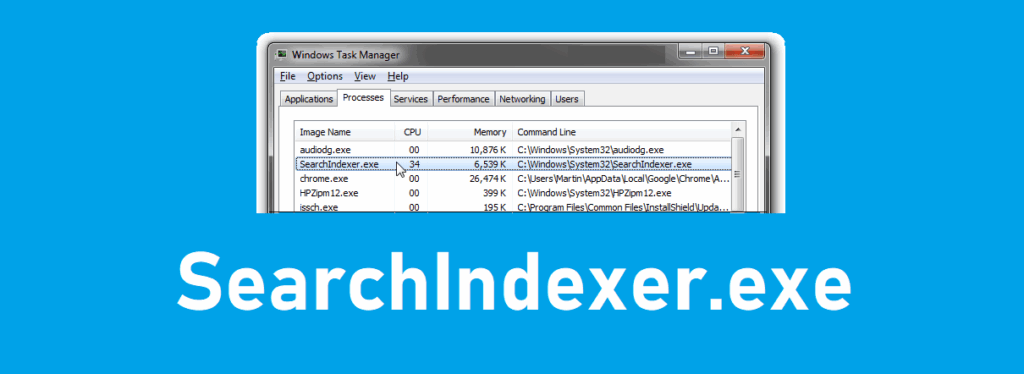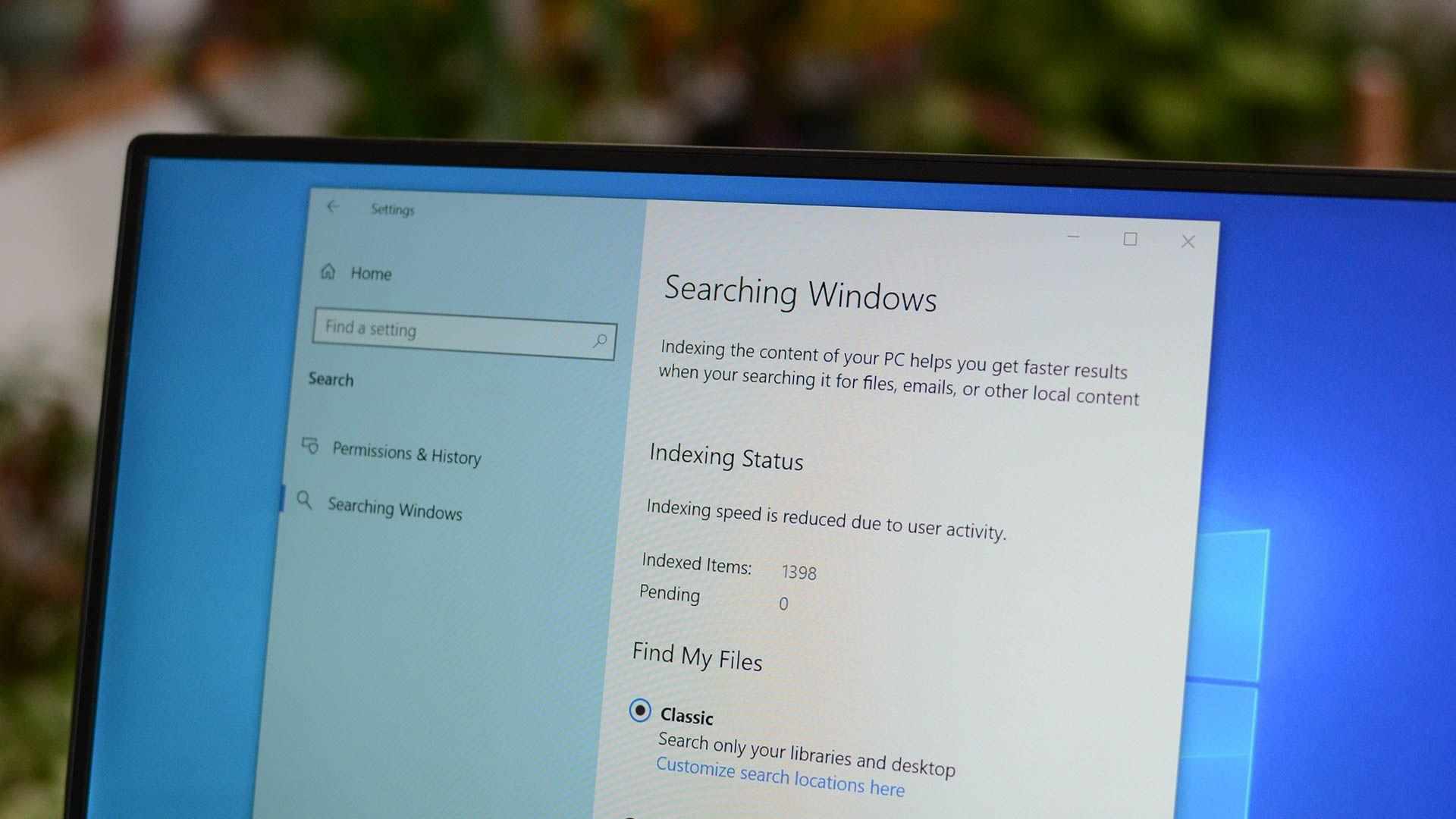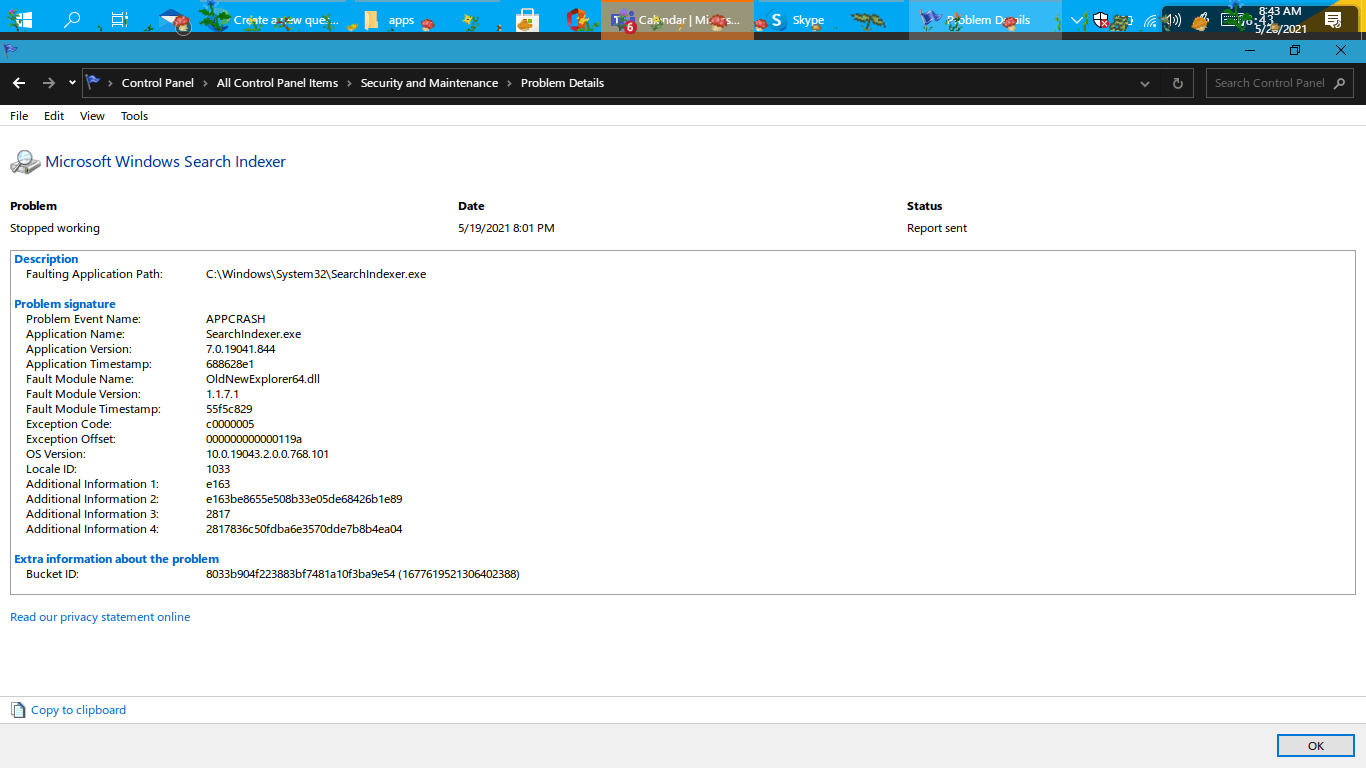- SearchIndexer.exe is the Windows indexer; useful, but can cause high CPU and disk usage.
- Solutions include restarting the service, rebuilding the index, and using the search resolver.
- System tools like SFC/DISM and Safe Mode scans remove crashes and corruption.
- In extreme cases, disabling Windows Search or adjusting Cortana resolves persistent usage.

When your computer is running slow and the disk is constantly making noise, it is not uncommon for the process to be the culprit. SearchIndexer.exe. This component is part of the windows search and is responsible for tracking and cataloging files to return results instantly, but sometimes it can skyrocket disk and CPU usage and turn everyday life into a real nightmare.
In this guide we tell you what exactly SearchIndexer.exe is, why it can consume so many resources and How to stop it with proven solutions, from the quickest to the most advanced. We also include specific steps for Windows 10, How to enable search indexing in Windows 10 and security measures against malware and a technical annex with the file and version details relevant in Windows 7/Windows Server 2008 R2.
What is SearchIndexer.exe?
SearchIndexer.exe It's the Windows Search and Indexing service executable. Its job is to scan the contents of your drives to build an index that allows you to locate files and their contents almost instantly, which is why the results appear so quickly when you use the system search engine.
This service runs in the background and scans documents, emails, and other types of data; by design, it may consume resources, although should not monopolize CPU or disk for long periods after the initial indexing is complete. If you prefer a lightweight alternative, learn to Use Everything to search for any file.
Historically, the file has been present since Vista (released on 11-08-2006) and appears in later releases such as Windows 8.1 and Windows 10; even a build linked to Office Access 2010 14 dated 07-04-2011 (version 7.0.16299.785) is cited, illustrating its long history in the ecosystem from Microsoft.
While SearchIndexer.exe is legitimate, sustained high usage is not always normal; it may indicate stuck indexing, component corruption, suboptimal configuration, or even malware interference.

Symptoms and causes of high consumption
The most common symptom is a constantly busy disk and high CPU spikes associated with SearchIndexer.exe in Task Manager. You'll also notice general lag and apps responding slowly, even when you're not doing anything demanding. Additionally, such sustained activity can generate spikes that trigger low disk space notifications.
Common causes include a corrupted index database, misconfigured paths or file types, search services not starting properly, corrupted system files, and in some scenarios, conflicts with system components such as Cortana in Windows 10.
Other times, indexing is in full swing after major changes (bulk backups, restores, migrations), in which case you can expect to see intense activity for a while, but not indefinite.
Finally, we must not rule out the presence of malware that camouflages itself or interferes with the search service, increasing consumption and causing persistent anomalies in performance.
Quick fixes that usually work
Before going into advanced techniques, it is worth trying a couple of simple actions that, in many cases, normalize the service without major complications and reduce the immediate impact in the team.
- Terminate the process and let it restart itself: open Task Manager, locate SearchIndexer.exe, right-click it and choose "end process"The system will restart automatically and consumption often returns to reasonable levels.
- Restart the search service: run services.msc (Win+R), search for Windows Search, go to Properties, check that the startup type is Automatic and that it is running; if not, start it or restart it from there and apply the changes.
- In older versions of Windows, Microsoft offered an automatic utility (Fix it) to repair common Windows Search problems. If you work with those systems, running the automatic search solver You can save time by correcting typical issues without manual intervention.
Windows 10: Built-in Tools and Recommended Settings
Windows 10 integrates a specific resolver for searching and indexing that should be tested when the consumption of SearchIndexer.exe is anomalous and does not yield with simple measures, achieving a guided correction.
Search and Indexing Troubleshooter: Go to Settings > Update & Security > Troubleshoot and run the option «Search and indexing»Detects configuration errors and automatically repairs the service.
Rebuild the index: Open Control Panel > Indexing Options > Advanced. On the File Types tab, select Indexing file properties and contents, apply and return to Index Configuration to press the Rebuild button. This process regenerates the index database and fixes corruptions or jams.
Repair system files: open Command Prompt (Admin) and launches, in this order, the SFC and DISM utilities to verify and recover damaged components that affect the search service.
- Run
sfc /scannow, wait for it to finish and restart if requested. - Run these DISM commands one by one:
Dism /Online /Cleanup-Image /CheckHealth,Dism /Online /Cleanup-Image /ScanHealthyDism /Online /Cleanup-Image /RestoreHealth.
If after these actions there is still abnormal consumption, it is advisable to review which locations and file types the system indexes and adjust the scope to prevent the service from process unnecessary content.
Security: Scan your computer in Safe Mode
When the problem persists and you notice strange behavior, move on to a security check. In several practical cases, cleaning the system has resolved the issue. high consumption of SearchIndexer.exe without further changes.
Boot into Safe Mode with Networking: Restart your PC and, before Windows loads, press F8. In the menu, select Safe mode with networking, log in and proceed with the analysis.
Use Microsoft Safety Scanner and the Malicious Software Removal Tool (MSRT). Download both and run them in Safe Mode so they can detect and remove malware. active threats that might interfere with Windows Search.
When they finish, reboot, press F8 again and choose Start Windows normally. Check performance and if consumption is stabilized, continue with an index rebuild to ensure there are no remaining errors. problematic waste.
Disable Windows Search: Temporarily or Permanently
If you don't need instant search, you can disable the service to gain performance at the expense of longer search times. Do this wisely, as it affects features that depend on Windows Search.
Disable from Services: open services.msc, search for Windows Search, go to Properties and set Startup Type to Disabled. Apply and reboot to prevent it from activating on the next boot.
Prevent a drive from being indexed: In Explorer, right-click the drive > Properties. On the General tab, uncheck "Allow files on this drive to have contents indexed in addition to file properties" and accept the changes.
Terminate the process temporarily: If you just want to relieve the load momentarily, in the Task Manager choose "end process" about SearchIndexer.exe. The system will relaunch it and sometimes it is enough for normalizes.
Windows 7/Windows Server 2008 R2: Technical Notes and Files
For these systems, Microsoft distributed hotfixes where Windows Search is delivered in common packages for both. On the Hotfix Request page, the entries appear under "Windows 7/Windows Server 2008 R2"; before installing, always review the "Windows XNUMX/Windows Server XNUMX RXNUMX" section. «Applicable to» to confirm the correct destination.
Dates and times shown in official listings are in UTC. On your computer, they will be displayed in local time adjusted for DST, and some metadata may change after file operations. precision audits.
About service branches: GDR collects widely distributed fixes for critical issues; LDR includes those as well as specific revisions. You can identify the product, milestone (RTM, SPn), and service branch type by the file version pattern, for example. 6.1.7600.16xxx for RTM GDR or 6.1.7601.22xxx for SP1 LDR.
The MANIFEST (.manifest) and MUM (.mum) files installed per component are listed separately; along with their Microsoft-signed .cat catalogs, they are essential for maintaining the component's state after applying updates and revisions.
Good practices and final notes
- If you rely heavily on Instant Search, avoid disabling Windows Search altogether and instead focus on adjusting the index and repairing components, prioritizing the use of official solver and the reconstruction of the index.
- For those who prefer performance above all else, disabling indexing may be a pragmatic decision, knowing that searches will take longer but the system will be more efficient. unburdened in background.
- For security reasons, we advise against downloading SearchIndexer.exe from third parties, even though there are sites that offer "free downloads" for each version; the correct binary comes with Windows and is updated via Windows Update.
- If during your queries you come across forum pages or platforms like Reddit, remember that some sites apply cookie and customization policies; in any case, it is important to compare the information with official documentation and proven procedures.
You should be able to identify why SearchIndexer.exe is hogging resources and get it back on track: start with the simple steps (restart a service or process), use the troubleshooter and rebuild the index, run SFC/DISM when appropriate, and reinforce with a scan in Safe Mode; if necessary, adjust Cortana or disable indexing for services and drives. This way, your computer will be performing normally again without sacrificing performance. system stability.
Editor specialized in technology and internet issues with more than ten years of experience in different digital media. I have worked as an editor and content creator for e-commerce, communication, online marketing and advertising companies. I have also written on economics, finance and other sectors websites. My work is also my passion. Now, through my articles in Tecnobits, I try to explore all the news and new opportunities that the world of technology offers us every day to improve our lives.
